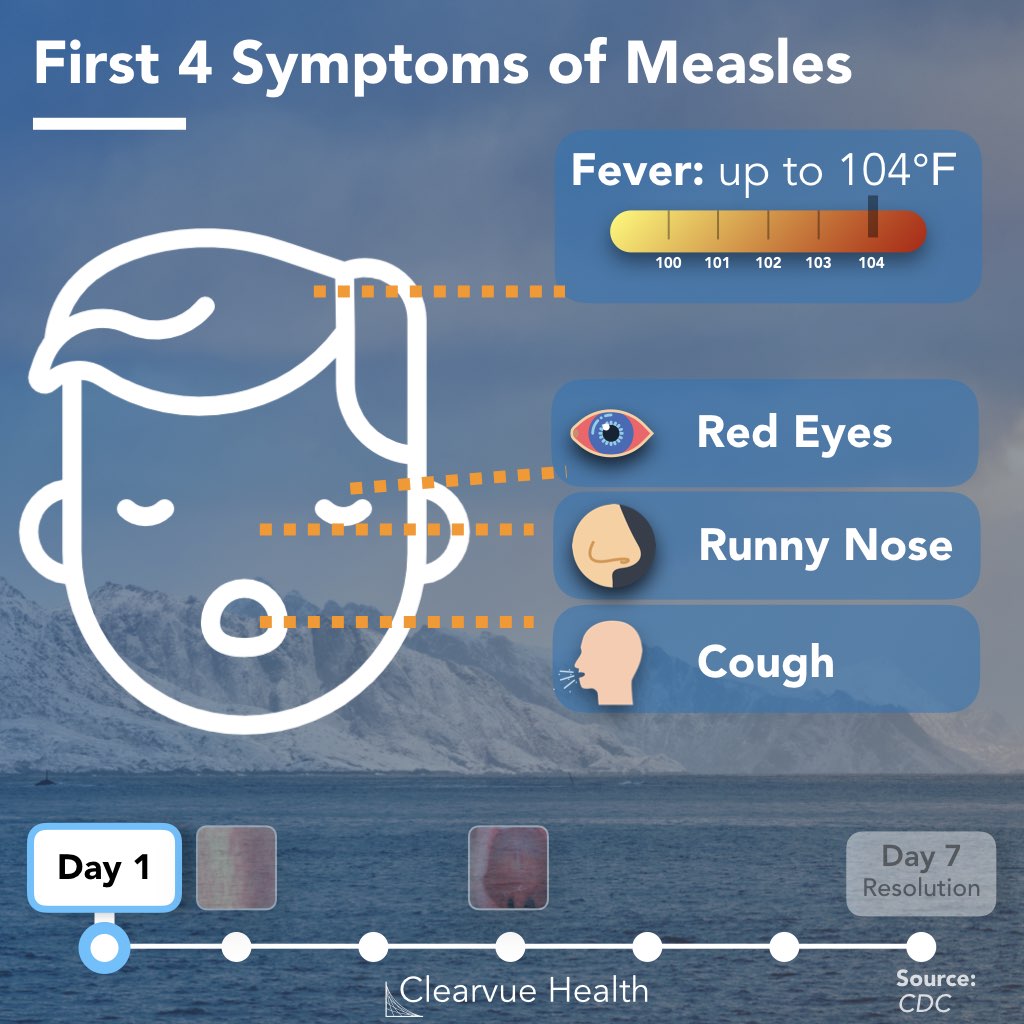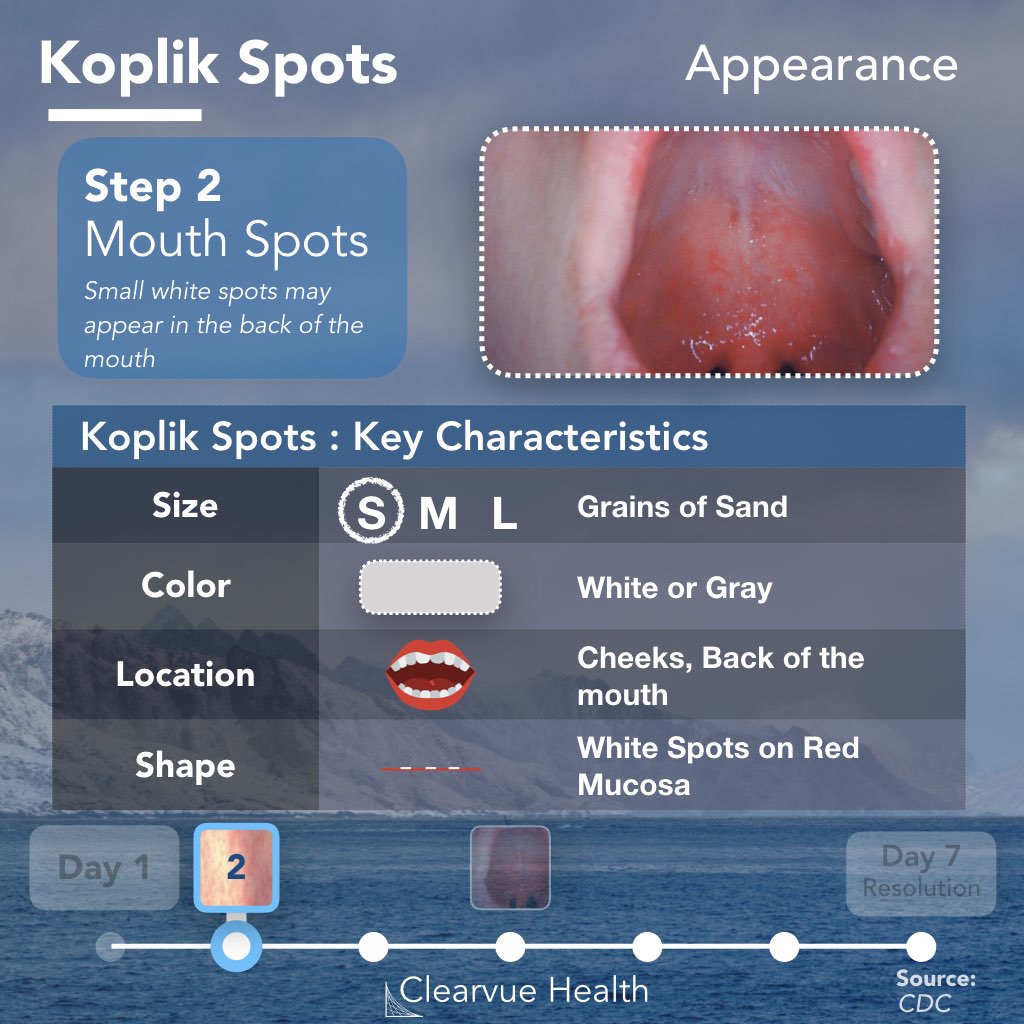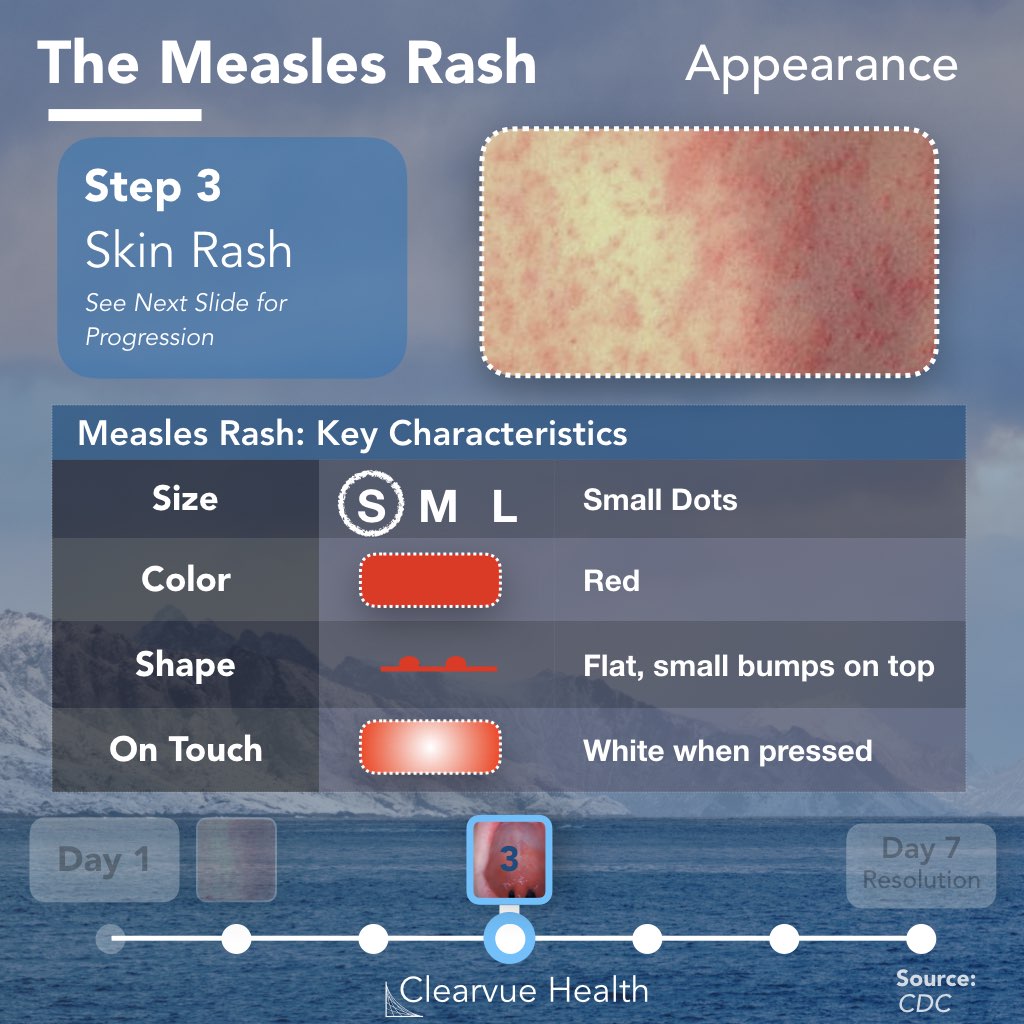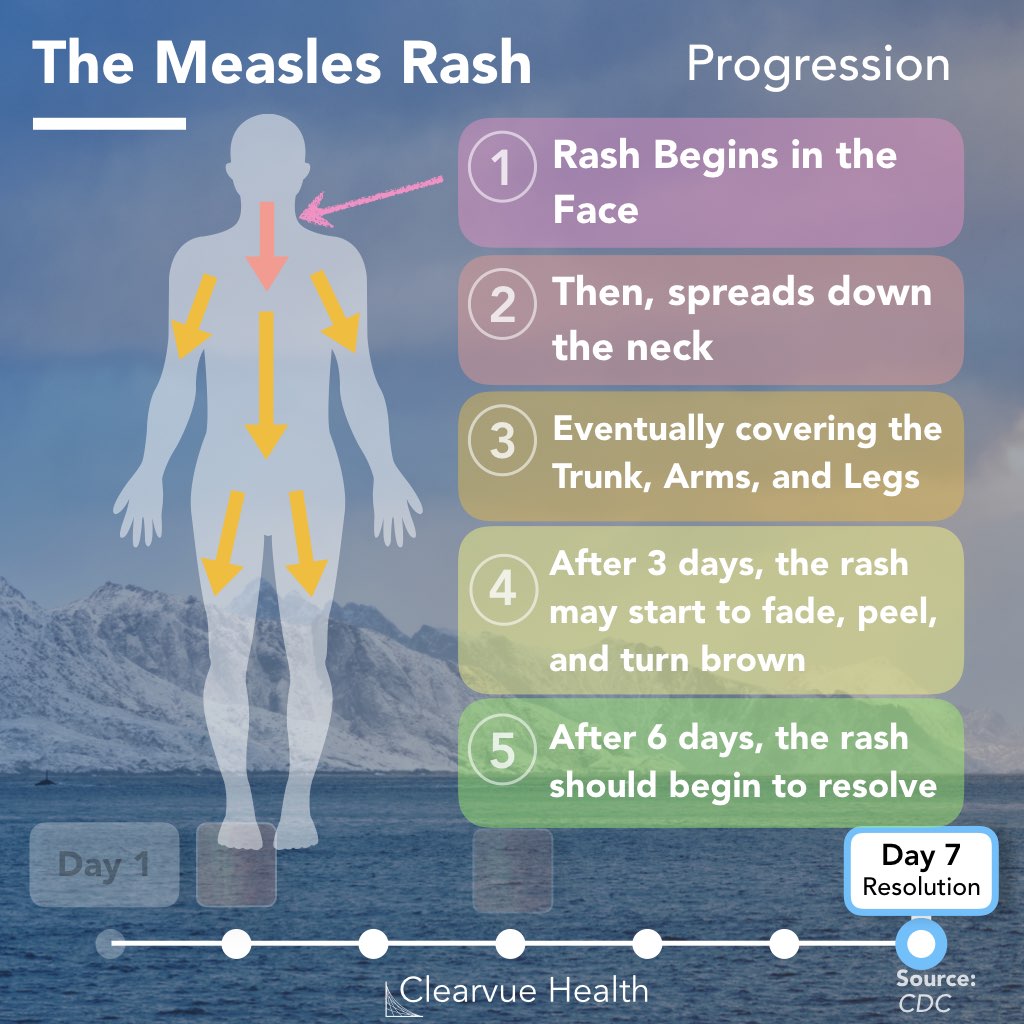Measles used to kill hundreds of Americans.
Vaccination essentially eliminated the disease, but unfortunately it's making a small comeback.
We've summarized the key symptoms of measles below so you can learn to recognize them.


Measles is transmitted through the air, making it difficult to stop or prevent.
Measles starts when the virus infects your eyes or your nose/mouth.
The virus then takes a few days to silently infect the patient before the first symptoms appear. The patient may be contagious during this period.
The first symptoms that appear are cough, runny nose, and red eyes. While these symptoms are not exclusive to measles, you should keep your eyes open for more symptoms if you do see these.
Patients may also develop a high fever, that can run very high up to 104 degrees F, particularly after the rash starts.
There have been 220 measles cases so far in 2018, according to the CDC, which is more than 2015, 2016, and 2017. Additionally, the 2018 data only covers about 5/6ths of the year, up until November 3rd, 2018. It is therefore possible that this number will rise before the end of 2018 as we see more cases.

Image Credit: CDC/ Heinz F. Eichenwald, MD
As measles progresses past the first symptoms, white dots can appear inside the mouth.
Koplik spots are white dots that appear on reddened mucosa (the “skin” inside your mouth.) Koplik spots are usually tiny, the size of grains of sand.

Image Credit: CDC/ Heinz F. Eichenwald, MD
Measles has a distinctive rash that progresses through a distinctive course as well. A few days after the first symptoms appear, a rash can appear first on the face face.
The rash consists of small red spots that are flat against the skin. Sometimes, bumps can appear on top of the spots.
When you press on the rash, in some patients the rash will turn white.

The Rash will then progress down the neck, and then the back/chest. The rash can then move towards your arms and legs.
After a few days, the rash will begin to go away. This typically goes through the order it came in, starting in the face and ending in your arms and legs.